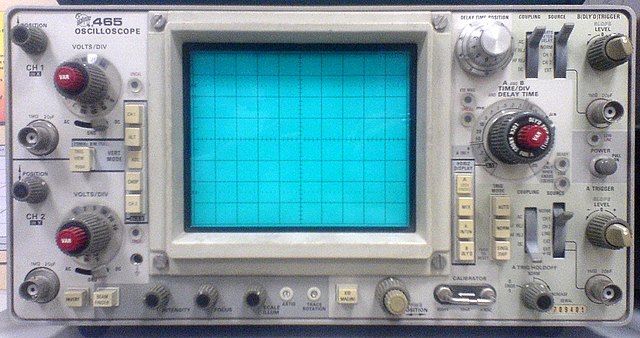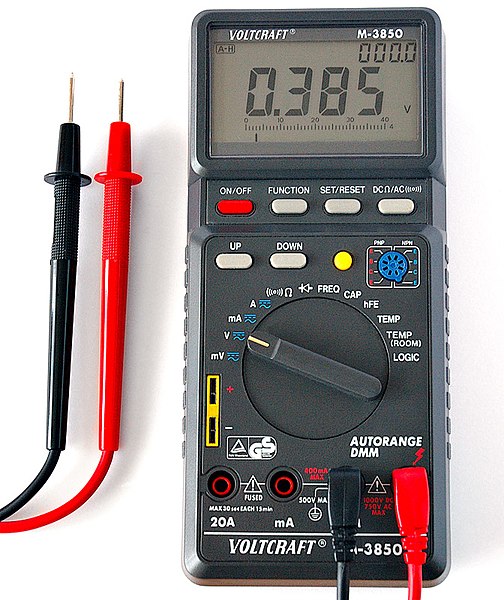An oscilloscope is a type of electronic test instrument that graphically displays varying voltages of one or more signals as a function of time. Their main purpose is capturing information on electrical signals for debugging, analysis, or characterization. The displayed waveform can then be analyzed for properties such as amplitude, frequency, rise time, time interval, distortion, and others. Originally, calculation of these values required manually measuring the waveform against the scales built into the screen of the instrument. Modern digital instruments may calculate and display these properties directly.
A Tektronix model 475A portable analog oscilloscope, a typical instrument of the late 1970s
Oscilloscope cathode-ray tube, the left square-shaped end would be the blue screen in the upper device when built in.
Typical display of an analog oscilloscope measuring a sine wave signal with 10 kHz. From the grid inherent to the screen together with the user-set parameters of the device shown at the upper display rim, the user may calculate the frequency and the voltage of the measured signal. Modern digital oscilloscopes set the measurement parameters and calculate/display the signal values automatically.
Type 465 Tektronix oscilloscope. This was a popular analog oscilloscope, portable, and is a representative example.
Electronic test equipment
Electronic test equipment is used to create signals and capture responses from electronic devices under test (DUTs). In this way, the proper operation of the DUT can be proven or faults in the device can be traced. Use of electronic test equipment is essential to any serious work on electronics systems.
Tektronix 7854 oscilloscope with curve tracer and time-domain reflectometer plug-ins. Lower module is a mainframe of the series Tektronix TM500 and has a digital voltmeter, a digital counter, an old WWVB frequency standard receiver with phase comparator, and function generator.
Keysight commercial digital voltmeter checking a prototype
Voltcraft M-3850 portable multimeter
A multimeter with a built in clamp facility. Pushing the large button at the bottom opens the lower jaw of the clamp, allowing the clamp to be placed around a conductor (wire). Depending on sensor, some can measure both AC and DC current.








